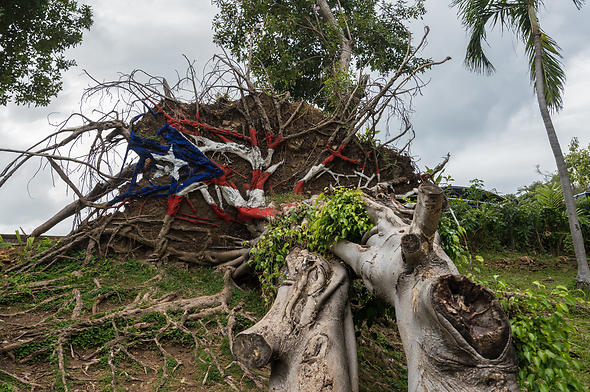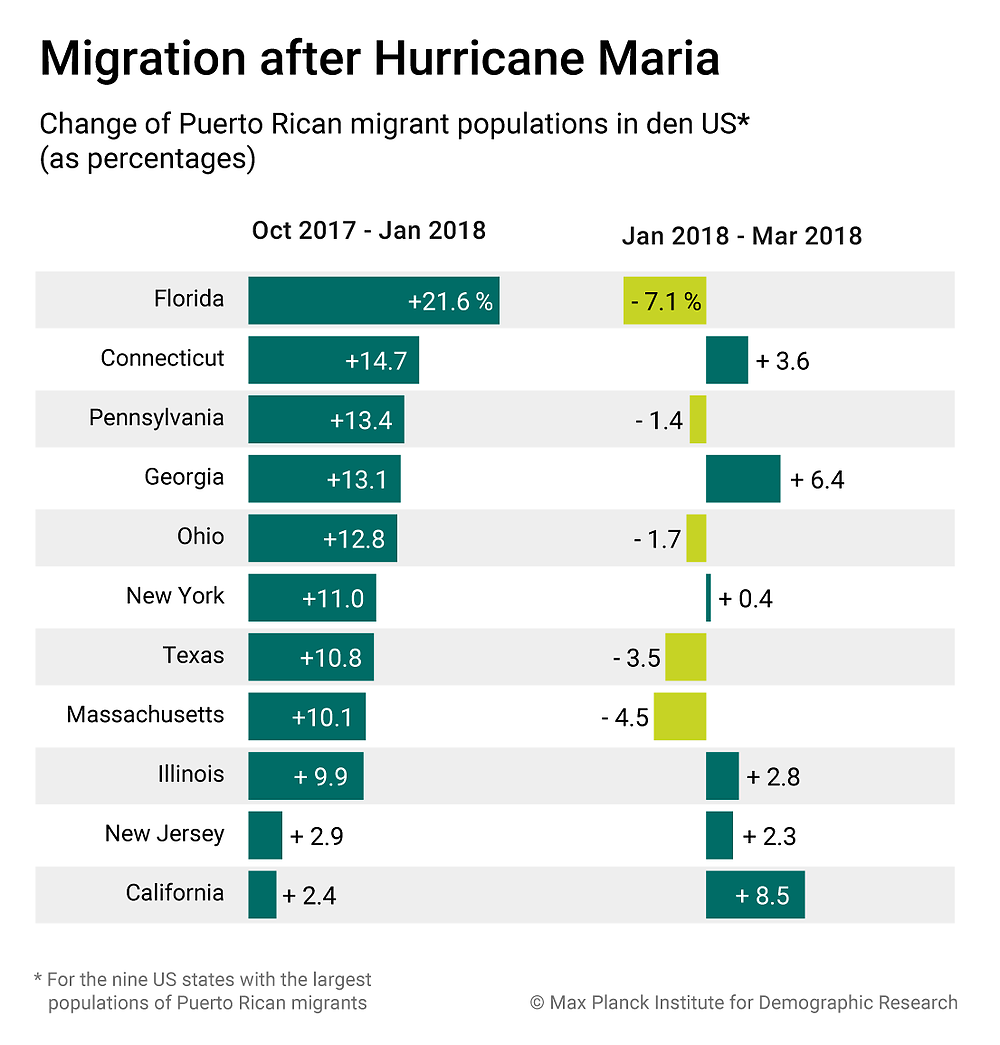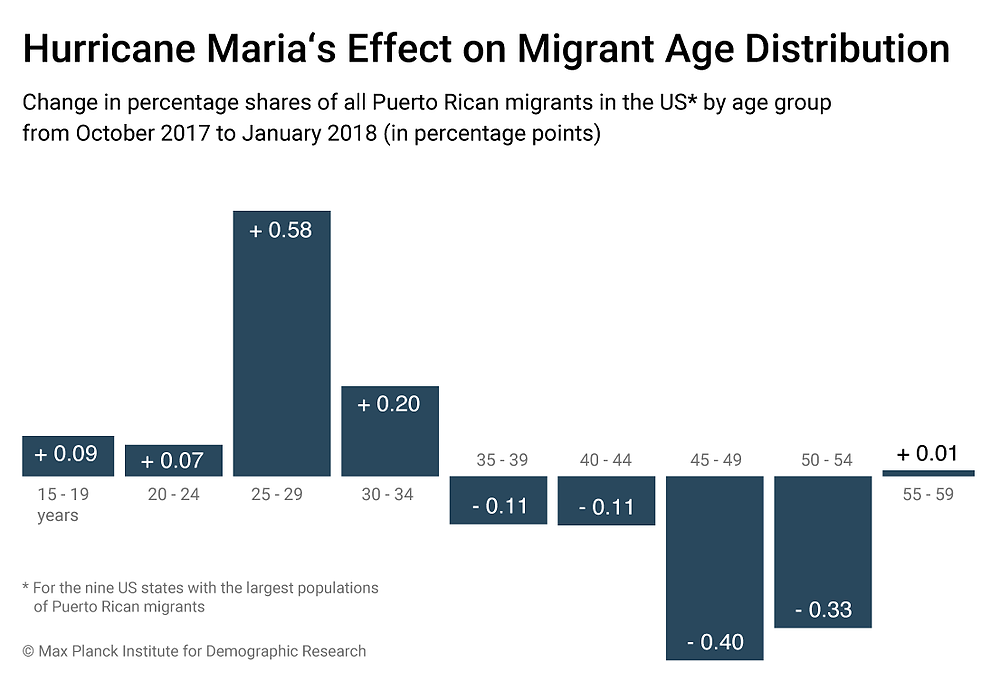September 18, 2019 | News | New Publication
Tracing relocations from Puerto Rico with Facebook data

© BackyardProduction/ iStockphoto.com
It is impossible to provide timely estimates of human migration flows after natural disasters by only using traditional data. Facebook offers new opportunities as a complementary source of information. Emilio Zagheni and his collaborators traced relocation after Hurricane Maria from Puerto Rico to the US and found return migration, too.
What did people do after the devastating Hurricane Maria hit Puerto Rico in September 2017? How many stayed? Who left? These and many more questions need to be answered quickly and precisely so that government agencies can support those who stayed and help those who left to get back home or establish a new life elsewhere. Traditional data sources do not provide information on relocations, for example movements between US states and outlying US territories like Puerto Rico on a monthly basis. But that data – migration values measured very frequently – is exactly what is needed by policy makers to plan for disasters.
Emilio Zagheni, Director of the Max Planck Institute for Demographic Research and Head of the Digital and Computational Demography Lab was able to work with another data source: Facebook. Compared to data sources like flight passenger data, mobile phone data or change of address and school enrollment, anonymous Facebook data that are routinely produced for advertisers offer precise demographic information about sex and age; a crucial advantage in this case. Only now it is possible to not only track how many people moved but also what characteristics they have. “My collaborators Monica Alexander, Kivan Polimis and I had been collecting data from Facebook’s advertising platform since 2017, so we have information about migration flows before and after the destructive event,” explains Zagheni.

Some month past the Hurricane Puerto Ricans started to return back home from the US. © MPIDR/Schwentker
This is important because Facebook data would not be representative if just observed at a single point of time. It is necessary to evaluate trends over a period of time and compare those to Facebook migration data for other countries. It is then that a sudden increase in migration from the island to the US, after Hurricane Maria hit Puerto Rico, is clearly identifiable. Zagheni and his colleagues published their findings in the current issue of the scientific journal Population and Development Review.
180,000 people moved out of Puerto Rico, mainly young men
The researchers found that right after the hurricane hit, approximately 180,000 people moved out of the island to the US, mainly young men between 15 and 30 years old. In addition, it could be seen that these young adults moved to US-states with a large Puerto Rican community: in Florida, New York and Pennsylvania the population increased the most.

Not everybody migrates after an catastrophic event. Mainly young people have the means to relocate. © MPIDR/Schwentker
Conversely, weaker people like the elderly, were left behind. “In general one can conclude that people need a certain level of means to relocate quickly. Their possibilities to move depend on their health and financial situation. People without means stay regardless of what happens,” says Emilio Zagheni. He also took account of the fact that less elderly are using Facebook and are therefore underrepresented in the data set by using adequate statistical models.
Working on solid ground with Facebook data
By evaluating a longer period of time the researchers also found that in early 2018 approximately 20,000 people returned to Puerto Rico. After the worst consequences of Hurricane Maria had been addressed, a trend to return back home started.
Accessing and interpreting these data correctly requires statistical and software development knowledge. “This project required a team with expertise in demography, data science and modern statistical approaches. Together we developed new methods and validated our results against complementary data sources, in an independent way.” explains Zagheni. That is why Zagheni is convinced that he is working on solid ground by using Facebook advertising data and modeling techniques to estimate migration flows after Hurricane Maria from Puerto Rico to the US.
Original publication
Alexander, M.; Polimis, K.; Zagheni, E.:
Population and Development Review 45:3, 617–630. (2019)
